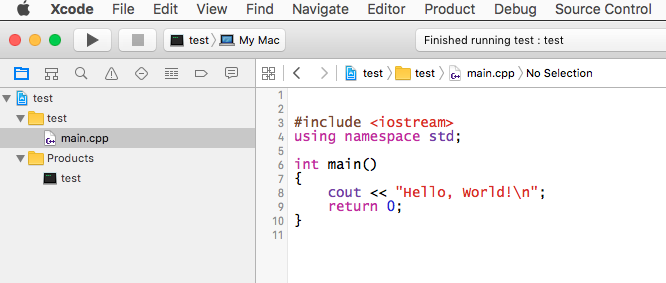How To Change Language In Dev C++
For bold you might set FOREGROUNDINTENSITY with SetConsoleTextAttribute. But there is no support for italic and strike (besides changing the console font which affects all characters). In the old MS-DOS days such was realised using ANSI escape sequences. Version: 5.4.2 RC9. Steps needed to reproduce the problem: Open 'Tools = Editor Options = Colors' and first scroll down the list (starting with 'Assembler') and note the current Background colors. Select one of the color themes in the list. Another way that you can change the default language is by running the installer from the command line. For example, you can force the installer to run in English by using the following command: vsinstaller.exe -locale en-US. The installer will remember this setting when it's run the next time.
- Jan 03, 2017 How To Change Background And Text Color In DEV C xKenz. Unsubscribe from xKenz? How to insert image in C language in hindi by Programming desire - Duration: 10:19.
- Dev-C is far too old to support C11. The compiler can be changed to point to a newer version of MinGW. The only issue is there's no direct support for new features in the editor or UI components for C11 switches in the IDE's configuration.
- Aug 26, 2017 Please refrain from using clrscr. This is a non-standard function which ships with conio.h which is a part of TURBO C. If you really need to clear your screen, try: code#include #define CLRSCR system(“clear”); inline void foo C.
Originally released by Bloodshed Software, but abandoned in 2006, it has recently been forked by Orwell, including a choice of more recent compilers. It can be downloaded from:
http://orwelldevcpp.blogspot.comInstallation
Run the downloaded executable file, and follow its instructions. The default options are fine.Support for C++11
By default, support for the most recent version of C++ is not enabled. It shall be explicitly enabled by going to:Tools -> Compiler OptionsHere, select the 'Settings' tab, and within it, the 'Code Generation' tab. There, in 'Language standard (-std)' select 'ISO C++ 11':
Ok that. You are now ready to compile C++11!
Compiling console applications
To compile and run simple console applications such as those used as examples in these tutorials it is enough with opening the file with Dev-C++ and hitF11.As an example, try:
File -> New -> Source File (or Ctrl+N)There, write the following:
Then:
File -> Save As... (or Ctrl+Alt+S)And save it with some file name with a
.cpp extension, such as example.cpp.Now, hitting
F11 should compile and run the program.If you get an error on the type of
x, the compiler does not understand the new meaning given to auto since C++11. Please, make sure you downloaded the latest version as linked above, and that you enabled the compiler options to compile C++11 as described above.Tutorial
You are now ready to begin the language tutorial: click here!.- C++ Basics
- C++ Object Oriented
- C++ Advanced
- C++ Useful Resources
- Selected Reading
The increment operator ++ adds 1 to its operand, and the decrement operator -- subtracts 1 from its operand. Thus −
And similarly −


Both the increment and decrement operators can either precede (prefix) or follow (postfix) the operand. For example −
or as −
When an increment or decrement is used as part of an expression, there is an important difference in prefix and postfix forms. If you are using prefix form then increment or decrement will be done before rest of the expression, and if you are using postfix form, then increment or decrement will be done after the complete expression is evaluated.
Example

Dev C++ Change Language
Following is the example to understand this difference −
When the above code is compiled and executed, it produces the following result −